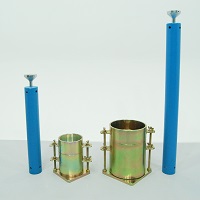GPR stands for ‘ground penetrating radar’ and it is a non-destructive geophysical method for detecting objects from the subsurface. Ground penetrating radar uses radar pulses and electromagnetic radiation in the radio spectrum’s microwave band for imaging, as it detects reflected signals from subsurface structures. Hence, it is widely used in a range of applications and on various surfaces, like pavements, fresh water, ice, rock, structures, and soil. As long as, the conditions are right, operators can rely on GPR to find subsurface objects, cracks, voids, and changes in the properties of materials underground.
The most basic type of GPR offers fast and reliable on-site imaging for drilling, coring, and cutting, and the characterisation of concrete slabs with missing or limited design drawings. It uses radio waves to find objects, which have different dielectric constants. Hence, materials like metals, filling, and plastics can easily be found within concrete. It can scan depths of up to 0.5m, where cover metres are typically limited to a range of 150mm to 200mm, making it ideal for rebar, post tensioning, and locating services.
Another type of GPR is a utility locator with a touch-screen controller that can take depth slices quickly, and export site reports wirelessly exported with geo-located data. The software enables off-site analysis and review, as well as global positioning locations complete with site photographs, Google Maps, or CAD. The rugged equipment comes with an intuitive touchscreen and an ergonomic lightweight trolley. The GPR is used for marking and locating pipes, utility lines and services, and other buried objects, like tanks. It can be used for creating reports and maps based on the locations and images generated from scans. It is also useful in civil engineering applications, archaeology, and geology.
First-generation utility location GPR is cost-effective for taking pictures of an underground infrastructure. Hence, it is typically used in finding metallic or non-metallic utilities, undocumented utilities, utilities with broken tracer wires, disturbed soil due to utility burial, and buried structures or unexpected obstacles, like old foundations, which can cause issues during construction and excavations. The equipment comes with a cutting-edge ground penetrating radar sensor, a robust battery, built-in odometer, and an instant response display.

